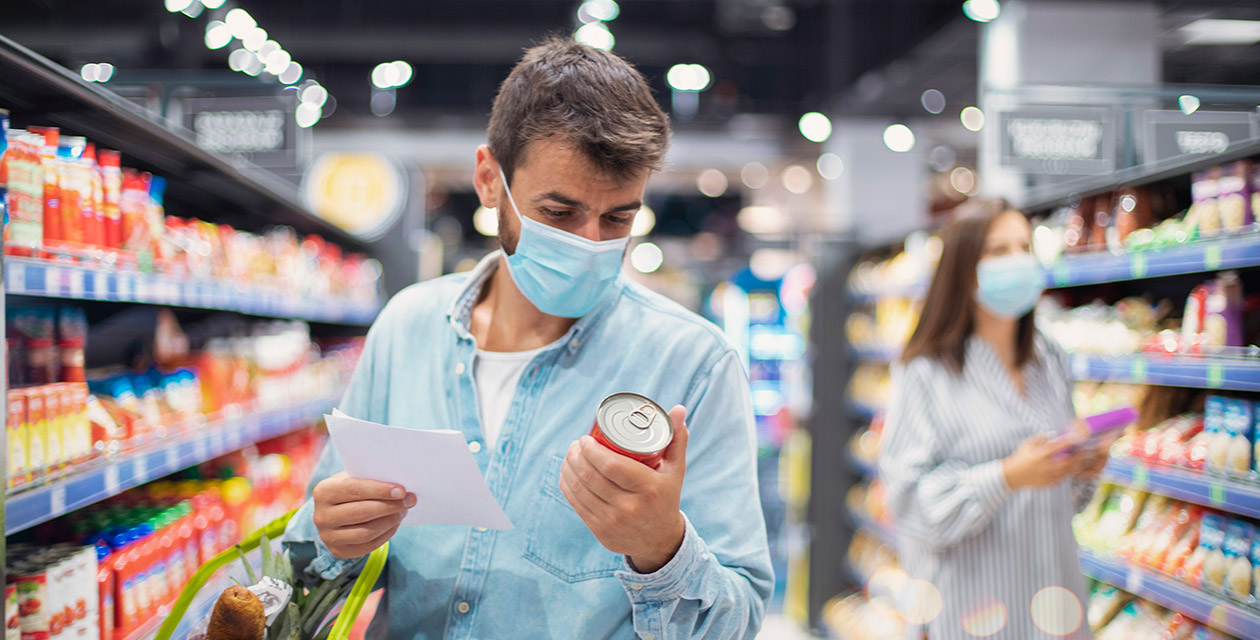As the novel Covid-19 pandemic continues to churn, events like an economic recession and global tariff wars are significantly impacting the retail industry. Overall consumer discretionary spending is down while more consumers avoid restaurants, travel, apparel, and entertaining away from home due to health safety and job security concerns.
Along with global events, consumer demographics are shifting, with Gen Z and millennials representing a massive $350 billion in consumer spending power in the U.S. alone. These multiple disruptive factors are transforming consumer behavior as retailers and brands try to adapt quickly and meet the increasing importance of consumer shopping habits. From online shopping to stockpiling staples, people are changing what they are purchasing, why, and how they are doing it.

The Homebody Economy
Overall grocery sales are booming because Americans are working from home and spending more time in the kitchen. In fact, 51 percent of shoppers are preparing over 91 percent of their meals at home. The biggest challenge these home cooks face is either new meal ideas or they are simply not inspired to cook. Meal kit providers like Hello Fresh and Local Crate have increased their shares significantly during the Covid-19 crisis.
Stockpiling and Panic Buying
Unless you are an older consumer or someone who has lived through a natural catastrophe, it was inconceivable that you couldn’t go into a store and purchase the products and services you wanted. Then Covid-19 struck and staple products such as paper towels, diapers, toilet paper, and other daily essentials became almost impossible to find. While brick-and-mortar and online stores struggled to keep their supply chains humming, consumers responded to the panic by buying in bulk and stockpiling.
The Rise of the New Online Consumer
With so many stores being temporarily or forced to close, millions of consumers opted to shift their shopping habits from in-store to online. In the U.S., online sales are rising dramatically. Adobe Analytics reported sales for September increased 43 percent year over year, reaching $60.4 billion, and surpassing the growth in the previous month by 1 percent.
It’s not surprising that 60 percent of online retail website visits came from mobile devices, with mobile now tallying 40 percent of all e-commerce sales. The rapid shift to e-commerce has also impacted grocery stores whose online sales grew from $4 billion in March 2020, jumping to $5.3 billion in April, then $6.6 billion in May. Incredibly, online grocery sales totaled just $1.2 billion in August 2019.
A consumer research report from grocery e-commerce platform Mercatus USA Inc. and Incisiv, shows online grocery purchases are projected to account for 21.5 percent of total U.S. grocery sales by 2025, reaching an estimated $250 billion. Prior to the pandemic, online sales were predicted to reach 13.5 percent of grocery sales by 2025—the revised model now shows a gain of over 40 percent.
Whereas Walmart, H-E-B, Kroger, Publix, and other larger grocers have benefitted from a strong online presence, growth has also filtered down to independent grocers who shored up their infrastructure—particularly in e-commerce—prior to the pandemic. E-commerce was offered by 64 percent of independent grocery stores in 2019, up from 32 percent the previous year.
Surveys continue to point to e-commerce as winning for the remainder of 2020. Six months into the pandemic, E-commerce software company CommerceHub surveyed more than 2,000 U.S. consumers to identify their shopping patterns. The survey results, released at the start of Q4, found that 67 percent find it more convenient to buy items online than in-store. And 89 percent plan to continue spending about the same or more online through November.
Omnichannel Options
Retailers are adjusting to the new shopping normal with digital platforms intended for stores, too. Since increasing consumer safety is a priority, innovative channels such as buy online pick up in-store (BOPIS), home delivery, and checkout-free technology are offered by most national retailers. Even Walmart’s new membership program, Walmart+, has a smartphone app that lets customers skip the line at stores. Independent grocery stores are also broadening their digital channels by offering delivery and pickup (30 percent) or pickup only (26 percent).
People are increasingly turning to grocery apps for BOPIS and home delivery. Compared to the previous year, downloads of grocery shopping apps now exceed 200 percent. Similarly, downloads of Instacart, Shipt, and Walmart have increased up to two-fold. In a recent Epsilon survey report, of the shoppers ordering online, “Gen X, millennials, and Gen Z are most likely to use an app to order for pick-up, and Gen Z and millennials are most likely to order from an app for delivery.” In addition, subscription services have increased overall.
Consumers seem to be adopting the new platforms permanently. BOPIS brings consumers the satisfaction of receiving their purchase almost immediately, which is especially attractive considering delayed delivery and shipment by many online retailers. 67 percent of shoppers in the CommerceHub survey say they are likely to continue using curbside pickup post-pandemic when delivery isn’t available or fast enough, compared with 59 percent at the start of the pandemic.
2020 has proven that more and more consumers are shifting their shopping habits across the board. Find out how Alliance Sales & Marketing can help your brand adapt to meet consumer needs.

